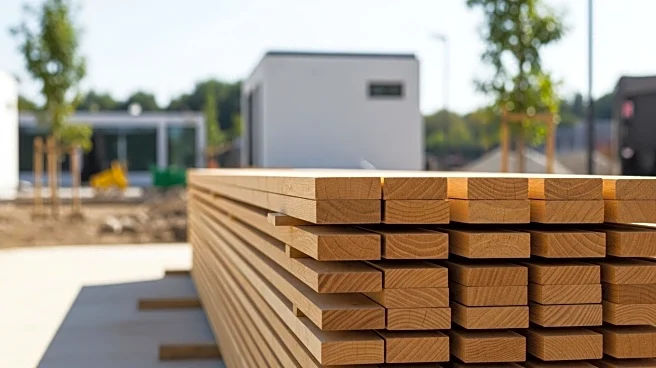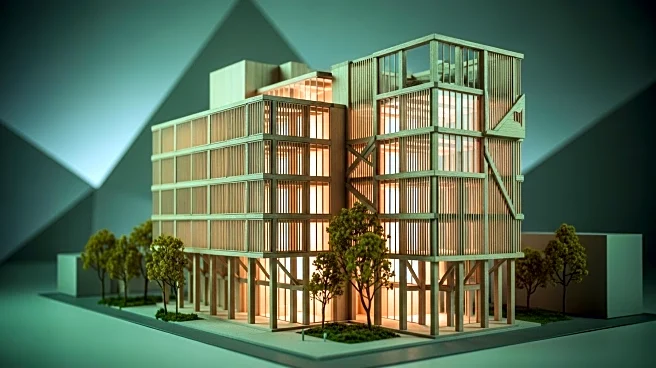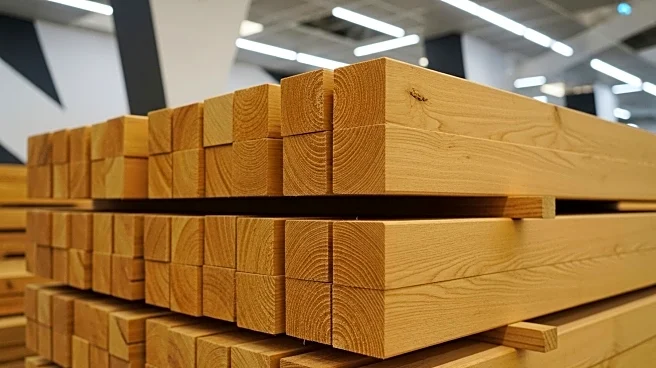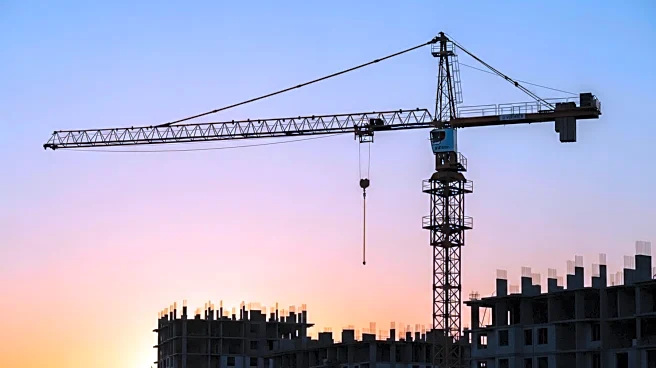What's Happening?
Mass timber is being advocated as a modular solution to reduce carbon emissions in construction, accelerate project timelines, and cut costs. Professor Bent Flyvbjerg's research suggests that successful projects utilize repeatable, scalable modules, akin to Lego blocks, rather than bespoke parts. This approach is seen as a way to enhance the efficiency and reliability of construction projects. Mass timber, particularly cross-laminated timber (CLT) and glulam beams, is factory-made to high tolerances and assembled quickly on-site, offering a lower carbon alternative to concrete and steel.
Why It's Important?
The adoption of mass timber in construction has significant implications for the industry, particularly in terms of sustainability and efficiency. By reducing reliance on concrete and steel, mass timber can help lower the carbon footprint of buildings. The modular approach also promises to streamline construction processes, potentially reducing costs and minimizing delays. This shift could benefit developers, lenders, and insurers by providing more predictable project outcomes. Additionally, mass timber's modularity supports adaptive reuse and vertical extensions, offering innovative solutions for urban development.
What's Next?
The construction industry may increasingly embrace mass timber as a viable alternative to traditional materials. This could lead to the establishment of new CLT plants and the standardization of timber systems, further enhancing modular construction practices. Policymakers might incentivize the use of mass timber through procurement rules and embodied carbon reduction initiatives. As the industry evolves, there may be greater collaboration between governments, developers, and financiers to support mass timber projects, potentially transforming the construction landscape.
Beyond the Headlines
The shift towards mass timber raises broader questions about the future of construction and urban planning. As modularity becomes more prevalent, there may be a need to rethink design principles and regulatory frameworks to accommodate new building methods. The emphasis on sustainability and efficiency could drive innovation in construction technologies and materials. Additionally, the integration of mass timber into urban environments may influence architectural aesthetics and community development, promoting a balance between functionality and environmental consciousness.











